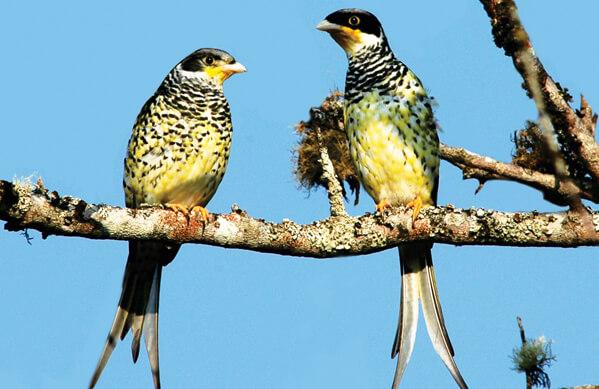 The species was unrecorded for 98 years until its rediscovery by ABC partner Associacion Armonía in 2000. It was elevated to full species status in 2011 based on evidence presented by Bennett Hennessey in The Wilson Journal of Ornithology (the bird was originally thought to be a subspecies of the Swallow-tailed Cotinga, which occurs 1,400 miles away in Brazil).
The species was unrecorded for 98 years until its rediscovery by ABC partner Associacion Armonía in 2000. It was elevated to full species status in 2011 based on evidence presented by Bennett Hennessey in The Wilson Journal of Ornithology (the bird was originally thought to be a subspecies of the Swallow-tailed Cotinga, which occurs 1,400 miles away in Brazil).
Eighty percent of the Palkachupa Cotinga's habitat has been destroyed by clearing and burning forest for firewood and pasture; unfortunately, this destruction is ongoing. Parts of the cotinga's former range are now completely treeless. Nesting success in remaining habitat is low; predation by jays and severe weather are the biggest causes of breeding failure.
Sign up for ABC's eNews to learn how you can help protect birds

Palkachupa Cotinga pair, by Juan Carlos Atienza
In 2010, a 145-acre reserve was established for the species. ABC has supported Armonía's work to study and conserve the Palkachupa Cotinga and continues to seek additional support for land-use planning and management, with the cooperation of the local community.
Donate to support ABC's conservation mission!




















































